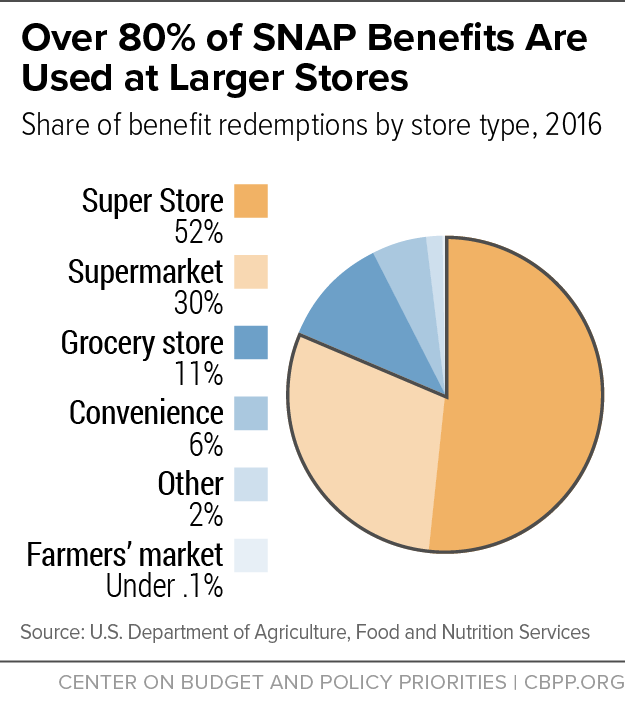BEYOND THE NUMBERS
The Supplemental Nutrition Assistance Program (SNAP), the nation’s primary anti-hunger program, boosts low-income households’ food purchasing power. SNAP participants buy the food they need, using SNAP benefits, at 260,000 stores throughout the country. Our new retailer resource page highlights the important role that retailers play in every state and congressional district.
SNAP boosts local economies through this public-private partnership. Because most households redeem their monthly SNAP benefits quickly, SNAP is one of the most effective forms of economic stimulus during a downturn. It can also be an important source of revenue for many stores. Participating retailers include small locally owned businesses as well as national retailer chains. Stores range in size from superstores (such as warehouse clubs and big-box retailers), supermarkets, and grocery stores to corner stores and farmers’ markets. To participate, retailers must stock a prescribed variety of foods and be authorized by the U.S. Department of Agriculture. As a result, SNAP participants can use their benefits in many of the stores and settings available to other consumers, though some communities have few or no authorized retailers.
Like most households, SNAP participants buy most of their food at superstores, supermarkets, and grocery stores, even though these stores comprise only 14 percent of all available retailers. Superstores alone redeem over half of all benefits (see chart). While nearly half of SNAP retailers are convenience stores and can represent crucial food access sites in rural communities, they’re a minor source of food for participants, redeeming only 6 percent of SNAP benefits.
See our resource page here.

